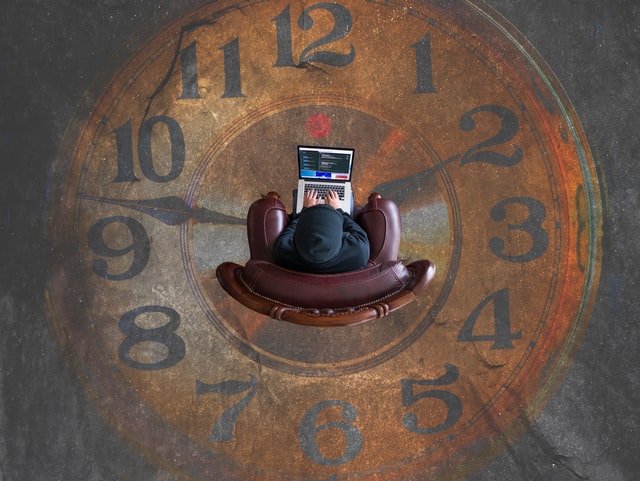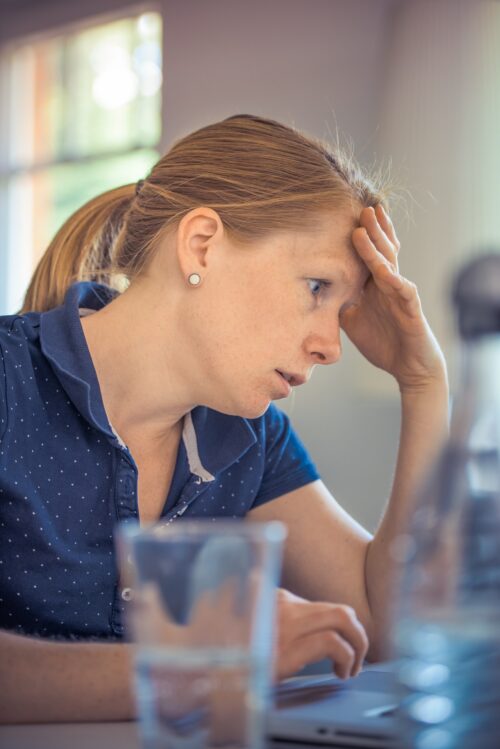In today’s fast-paced and demanding world, stress has become a common part of our lives. It can affect our physical and mental well-being, leading to various health issues. That’s why it is crucial to prioritize relaxation and find effective techniques to alleviate stress. Relaxation not only provides immediate stress relief but also contributes to long-term well-being. By incorporating and practising relaxation techniques into your daily routine, you can master the art of relaxation and lead a more balanced and stress-free life.
Deep Breaths: A Simple Technique for Immediate Relaxation and Stress Relief
One of the simplest and most accessible relaxation techniques is deep breathing. It can be practiced anywhere, anytime, and it requires no special equipment. Deep breathing helps activate the body’s relaxation response, reducing the production of stress hormones and promoting a sense of calmness.
To practice deep breathing, find a comfortable position and close your eyes. Take a slow, deep breath in through your nose, allowing your abdomen to expand fully. Hold your breath for a moment, then exhale slowly through your mouth, releasing all the tension and stress. Repeat this process several times, focusing on the sensation of your breath entering and leaving your body. Deep breathing can be especially effective during moments of high stress or anxiety, providing an immediate sense of relaxation and relief.
Progressive Muscle Relaxation: How to Release Tension in Your Body
Another powerful technique for relaxation is progressive muscle relaxation. This method involves intentionally tensing and then releasing different muscle groups in your body, helping to release tension and promote a deep state of relaxation.
To practice progressive muscle relaxation, start by finding a quiet and comfortable place to sit or lie down. Begin with your toes, tightly curling them for a few seconds and then releasing the tension, allowing them to relax completely. Move on to your calves, thighs, buttocks, and progressively work your way up through your body, tensing and releasing each muscle group.
As you go through each muscle group, pay close attention to the sensations of tension and relaxation. This technique not only helps release physical tension but also promotes body awareness and mindfulness. By systematically relaxing your muscles, you can effectively release stress and achieve a deep sense of relaxation.
Guided Imagery: Using Visualization to Calm Your Mind
Guided imagery is a relaxation technique that involves using your imagination to create a peaceful and calming mental image. It can be particularly helpful for calming an overactive mind and reducing anxiety.
To practice guided imagery, start by finding a quiet and comfortable place where you won’t be disturbed. Close your eyes and take a few deep breaths to center yourself. Then, imagine yourself in a serene and tranquil setting, such as a beach or a peaceful garden. Engage all your senses in this visualization, imagining the warmth of the sun on your skin, the sound of gentle waves, and the scent of blooming flowers.
Allow yourself to fully immerse in this mental image, letting go of any stressful thoughts or worries. Stay in this peaceful state for a few minutes, experiencing the soothing effects of your imagination. Guided imagery can be enhanced by using audio recordings or apps that provide guided meditation sessions, making it easier for beginners to practice and experience the benefits of this relaxation technique.
Incorporating Relaxation Techniques into Your Daily Routine
While practicing relaxation techniques during moments of stress or anxiety is beneficial, incorporating them into your daily routine can significantly enhance their effectiveness. By making relaxation a habit, you can proactively manage your stress levels and promote overall well-being.
Start by setting aside dedicated time each day for relaxation. This can be as little as 10 minutes or as long as an hour, depending on your schedule and preferences. Find a quiet and comfortable space where you can practice your chosen relaxation techniques without distractions.
Experiment with different techniques to find what works best for you. You may prefer deep breathing exercises in the morning to start your day on a calm note, and progressive muscle relaxation in the evening to unwind before bed. By making relaxation a consistent part of your routine, you can reap the long-term benefits and cultivate a greater sense of peace and balance in your life.
Practising Other Effective Relaxation Techniques
While deep breathing, progressive muscle relaxation, and guided imagery are highly effective relaxation techniques, there are many other approaches you can explore. Some popular options include yoga, meditation, aromatherapy, and mindfulness exercises.
Yoga combines physical movement with deep breathing and meditation, promoting relaxation and flexibility. Meditation involves focusing your attention and eliminating the stream of thoughts, leading to a state of tranquility. Aromatherapy utilizes essential oils to create a calming environment and promote relaxation. Mindfulness exercises encourage you to be fully present in the moment, letting go of worries and focusing on the here and now.
By practising relaxation techniques, you can find the ones that resonate with you the most and incorporate them into your daily routine. Remember that what works for one person may not work for another, so it’s essential to explore and find what brings you the most relaxation and stress relief.
The Science Behind Relaxation and Stress Relief
The benefits of relaxation techniques for stress relief go beyond subjective experiences. There is a growing body of scientific research that supports the effectiveness of these techniques in reducing stress and promoting well-being.
Studies have shown that relaxation techniques can lower heart rate, blood pressure, and cortisol levels – the hormone associated with stress. They can also improve sleep quality, enhance immune function, and reduce symptoms of anxiety and depression. Regular practice of relaxation techniques has even been linked to long-term improvements in overall mental and physical health.
The science behind relaxation lies in its ability to activate the body’s relaxation response, also known as the parasympathetic nervous system. This response counteracts the “fight or flight” response activated during times of stress, helping the body return to a state of balance and restfulness.
Benefits of Practicing Relaxation Techniques Regularly
Incorporating relaxation techniques into your daily routine can bring a wide range of benefits to your life. Here are some of the key advantages of practicing relaxation regularly:
- Reduced stress and anxiety: Relaxation techniques help calm the mind and release tension, reducing the overall levels of stress and anxiety.
- Improved sleep quality: By promoting relaxation, these techniques can improve sleep quality, making it easier to fall asleep and stay asleep throughout the night.
- Enhanced focus and productivity: Relaxation techniques can improve focus and concentration, allowing you to be more productive and efficient in your daily tasks.
- Boosted mood and emotional well-being: Regular relaxation promotes a positive mood and emotional well-being, reducing symptoms of depression and enhancing overall happiness.
- Better physical health: Lowered stress levels and improved relaxation have been linked to various physical health benefits, including reduced blood pressure, improved immune function, and decreased risk of chronic diseases.
By making relaxation a priority and practicing these techniques regularly, you can experience these benefits and lead a more balanced and fulfilling life.
Resources and Tools for Learning and Mastering Relaxation Techniques
If you’re interested in learning and mastering relaxation techniques, there are numerous resources and tools available to guide you on your journey. Here are a few suggestions:
- Books and websites: Many books and websites offer detailed instructions, explanations, and guided exercises for various relaxation techniques. Look for reputable sources that provide evidence-based information and step-by-step guidance.
- Mobile apps: There are numerous mobile apps available that provide guided meditations, deep breathing exercises, and relaxation sessions. These apps can be a convenient way to practice relaxation techniques on the go.
- Workshops and classes: Consider attending workshops or classes in your local area that focus on relaxation techniques. These sessions often provide hands-on guidance and allow for interaction with experienced instructors and other participants.
- Therapy and counseling: If you’re struggling with chronic stress or anxiety, seeking guidance from a licensed therapist or counselor can be highly beneficial. They can provide personalized support and help you develop an individualized relaxation plan.
Remember, mastering relaxation techniques is a journey, and it may take time and practice to find what works best for you. Be patient with yourself and embrace the process of self-exploration and discovery.
Conclusion: Start Your Journey to a Stress-Free Life Today
In today’s fast-paced world, mastering the art of relaxation is essential for maintaining our well-being and finding balance amidst the chaos. By incorporating relaxation techniques into our daily lives, we can effectively manage stress and promote overall physical and mental health.
Start your journey to a stress-free life today by practicing relaxation techniques: deep breathing, progressive muscle relaxation, guided imagery, and other techniques. Experiment with different approaches, find what resonates with you, and make relaxation a consistent part of your routine. Remember that relaxation is a skill that can be learned and improved with practice.
Prioritize your well-being and embrace the transformative power of relaxation. With dedication and perseverance, you can master the art of relaxation and enjoy a more peaceful and fulfilling life. Begin your journey today and experience the profound benefits that relaxation can bring.
- Take the first step towards a stress-free life by incorporating relaxation techniques into your daily routine. Start with deep breathing exercises or try a guided imagery session. Remember, relaxation is a stress relief that can be learned and improved with practice. Begin your journey today and experience the transformative power of relaxation
- Start incorporating these relaxation techniques into your everyday life. Good health doesn’t only rely on physical wellness efforts such as a balanced diet and regular exercise. Part of it is consists of mental exercises, emotional regulation, and conscious effort to avoid harmful responses to stressful situations. Did you know creating a wellness space, can help you to reduce impacts of stress. Have you seen our stress management training?
- If you feel as though relaxation techniques just won’t cut it for you, then it’s best if you seek advice from a mental health professional.
- Access Psychosocial Hazards Books from Amazon: Psychosocial Hazards












